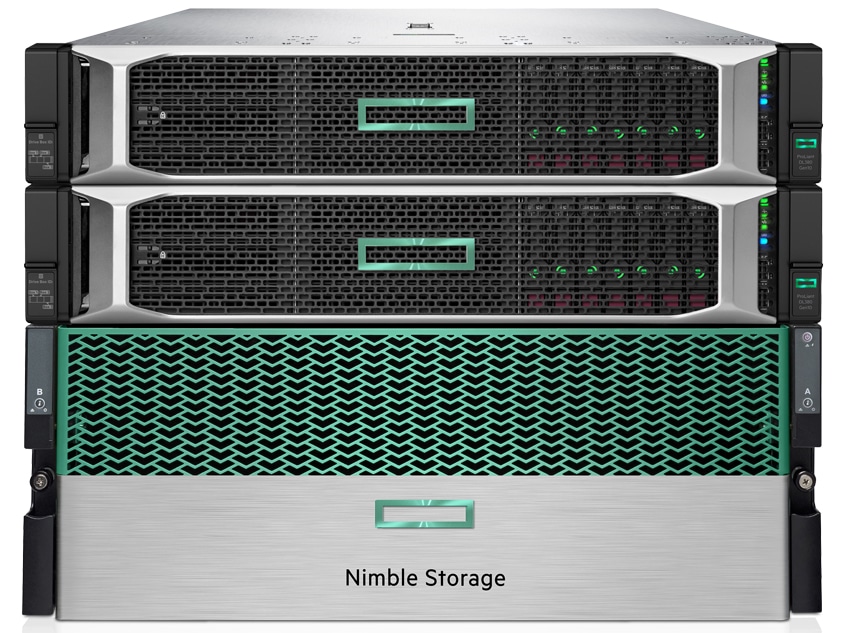![]() Today at HPE Discover in Las Vegas, Hewlett Packard Enterprise (HPE) announced that it is expanding its integrated hybrid cloud portfolio. The company states that its expanded portfolio will deliver choice, consistent experience, and optimized workloads across clouds. At the crux of this expansion is HPE’s AI-driven operation, InfoSight, as well as composability that HPE uses in various other products.
Today at HPE Discover in Las Vegas, Hewlett Packard Enterprise (HPE) announced that it is expanding its integrated hybrid cloud portfolio. The company states that its expanded portfolio will deliver choice, consistent experience, and optimized workloads across clouds. At the crux of this expansion is HPE’s AI-driven operation, InfoSight, as well as composability that HPE uses in various other products.
Today at HPE Discover in Las Vegas, Hewlett Packard Enterprise (HPE) announced that it is expanding its integrated hybrid cloud portfolio. The company states that its expanded portfolio will deliver choice, consistent experience, and optimized workloads across clouds. At the crux of this expansion is HPE’s AI-driven operation, InfoSight, as well as composability that HPE uses in various other products.

Businesses need to innovate to stay competitive and relevant. Many are embracing digital transformation in order to improve their processes and give their customers better experiences. Doing so comes with many advantages but also introduces several complexities that make data and processes hard to manage. Not only that, embracing digital transformations can increase costs through software licensing or get customers stuck in vendor lock-in.
HPE announced its composable infrastructure in June of 2015 (still just HP at the time). The infrastructure is said to uniquely provide a consistent operating model for virtualized, containerized and bare-metal applications, enabling customers to compose fluid pools of compute, storage and networking with their choice of software stacks. Since its introduction it now has over 3,000 customer and see a 78% year over year growth today. HPE is expanding its composable infrastructure by allowing customers to turn existing HPE ProLiant 360/380/560 Gen 10 servers into composable infrastructure.
What is HPE Composable Rack?
The above is part of the company’s new HPE Composable Rack. Aside from allowing customers to transform new and existing HPE ProLiant DL rack-based servers into composable infrastructure, HPE Composable Rack provides customers the ability to deploy their choice of HPE physical storage or software-defined storage including VMware vSAN. HPE states that converting ProLiant servers to composable infrastructure can deliver automated deployment, scale, and management to run any workload, including virtualized, containerized, or bare-metal applications, all while using the existing servers.
Aside from VMware vSAN, HPE Composable Rack also has the choice of using HPE SimpliVity hyperconverged infrastructure (HCI) as their software-defined storage component. SimpliVity enables customers to deploy a pool of HCI nodes alongside other storage, benefitting from HPE SimpliVity’s always-on deduplication and compression that drives capacity and bandwidth efficiency, and built-in backup/recovery and disaster recovery.
HPE is extending its HCI through adding the AI capabilities of HPE InfoSight to SimpliVity. This gives the HCI customers global visibility into detailed system, performance, and capacity utilization, enabling predictive data analytics and recommendations for system and performance optimization. A second expansion of HCI is through the introduction of HPE Nimble Storage dHCI (disaggregated hyperconverged infrastructure). According to HPE, dHCI combines the self-managing experience of HPE Nimble Storage combined with HPE ProLiant Servers to offer the advantages of HCI and the performance of ProLiant servers. All this combined with HPE InfoSight delivers a full-stack intelligence and policy-based automation for virtualized environments.
Availability
HPE Composable Rack in August 2019 in the United States, United Kingdom, Ireland, France, Germany, and Australia. HPE Nimble Storage hybrid cloud capabilities with Google Cloud’s Anthos in Summer 2019. HPE SimpliVity with HPE Infosight in August 2019. HPE Nimble dHCI in the fourth quarter of the company's financial year 2019.
Sign up for the StorageReview newsletter

